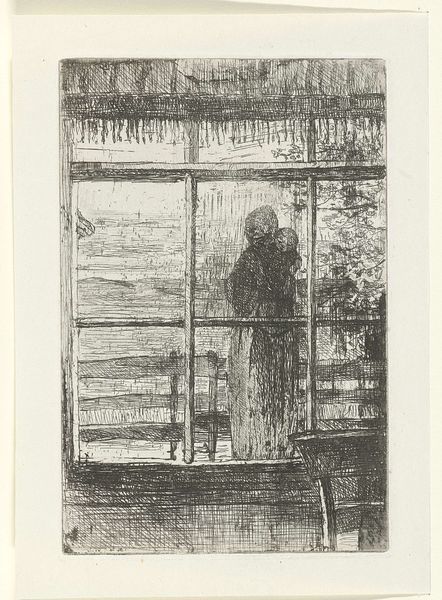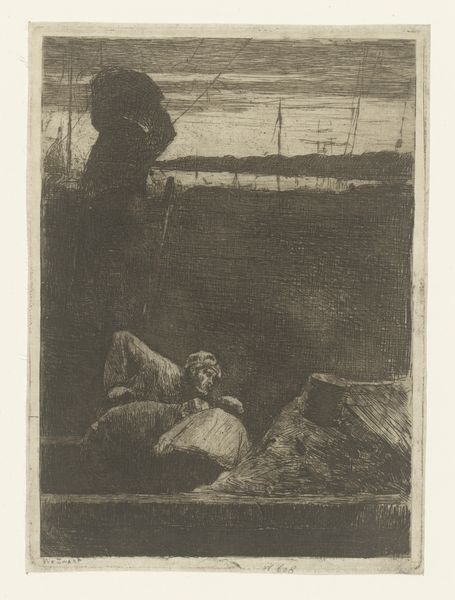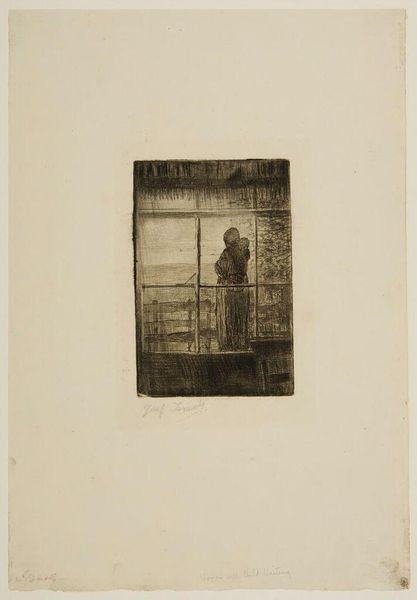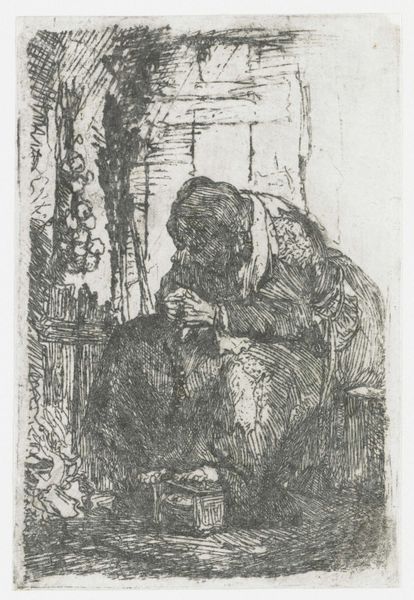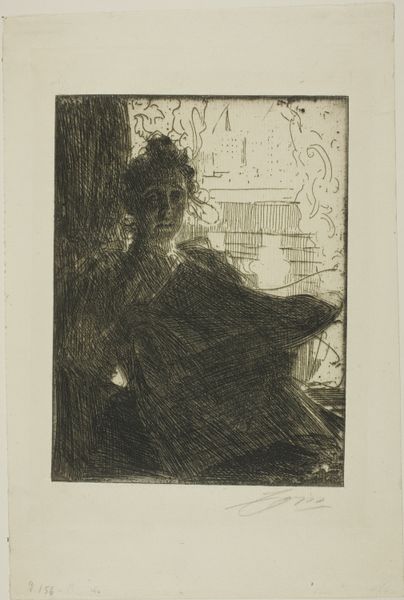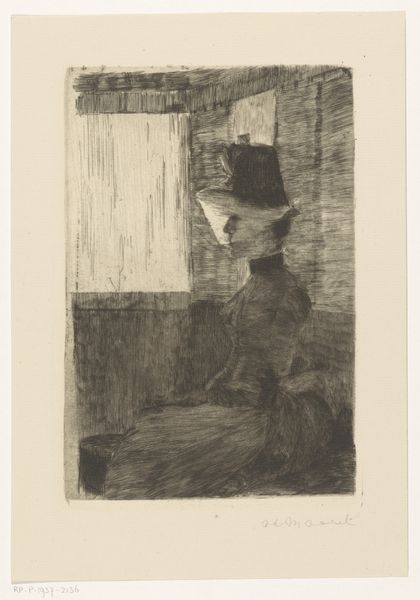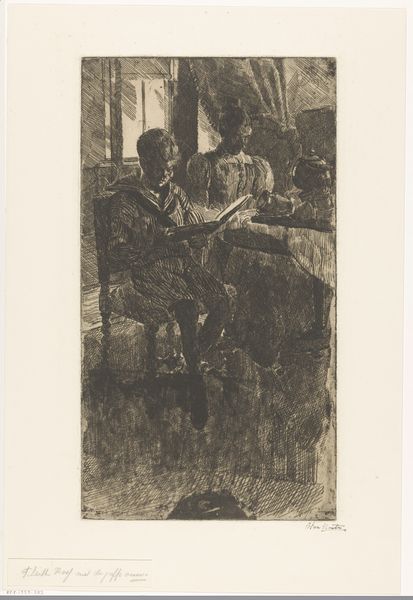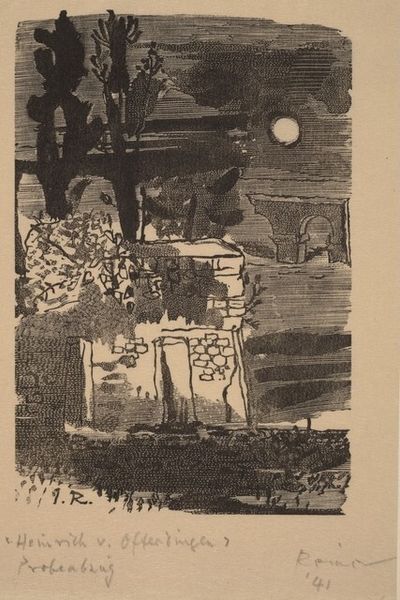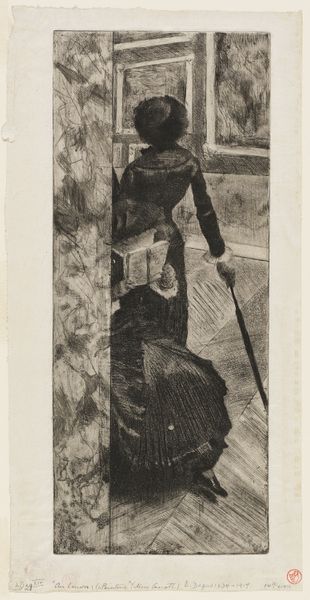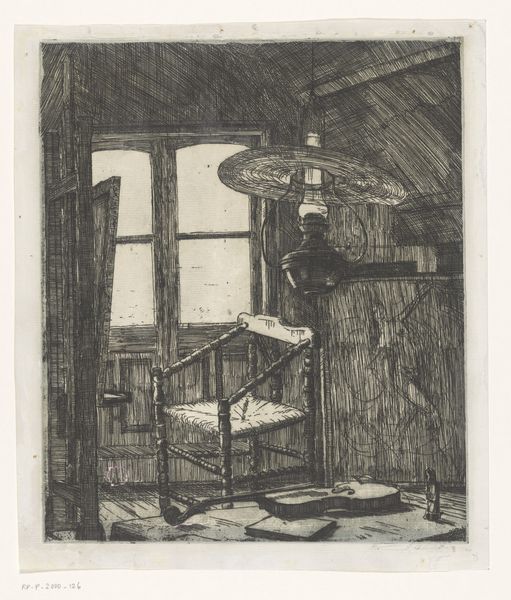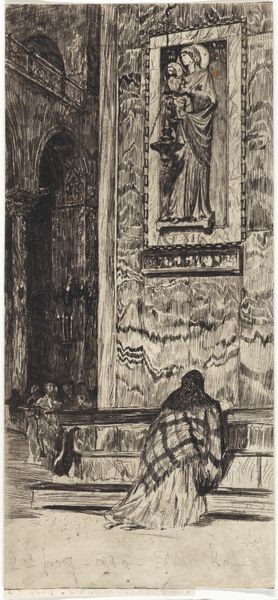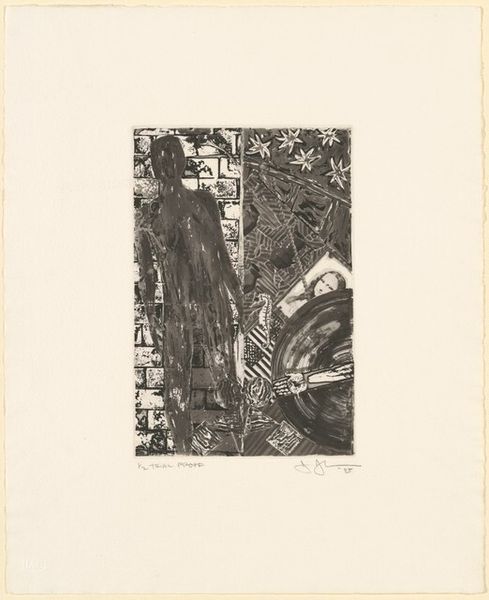
drawing, print, etching
#
portrait
#
drawing
#
mother
# print
#
impressionism
#
etching
#
pencil sketch
#
old engraving style
#
landscape
#
figuration
#
genre-painting
#
realism
Dimensions: height 153 mm, width 101 mm
Copyright: Rijks Museum: Open Domain
Curator: Jozef Israëls created "Wachtende vrouw met kind"—translated as "Waiting Woman with Child"— sometime between 1835 and 1911. It's currently held here at the Rijksmuseum and executed as an etching. Editor: Haunting. That's the first word that comes to mind. It’s as if the world outside the window, that misty landscape, is pressing against her, and she’s caught between worlds. It feels like waiting is more than just a pastime here, it's a state of being. Curator: That feeling resonates deeply with the context of Israëls' work. He often depicted scenes of poverty and hardship among the Jewish community in the Netherlands, using a realist style tinged with impressionistic brushwork. His art frequently highlighted the struggles of marginalized people. Editor: Yes, I can see that now. It’s almost a shadow self. I'm curious about her gaze: Is she waiting for someone specific, or is she waiting for…something to change, for life to shift? Also, the lines of the etching are so fragile. Curator: Indeed. And given the turbulent social and political climate of the late 19th century, dominated by rising nationalism and early forms of social welfare, her situation becomes amplified as a statement of the social neglect of women. Note Israëls use of light and shadow to convey her emotional state, emphasizing a theme of societal expectations and the female role within a changing world. Editor: Do you think the artist used print to convey this atmosphere of heavy life, or was there other economic factors, to make this a popular format and theme, easily reproduced and readily available. Like now days. Curator: Good point. Indeed the genre paintings such as these were quite successful, especially the small format reproductions, making it widely accessible as the price of paintings were significantly high for a bigger segment of the population. Editor: I like the frame that frames her world; so this picture-window world. That one act adds to the drama. Curator: Well, on my part I will walk away, understanding more about the influence and the political relevance this work carried when it was originally published and presented. Thank you for giving your thoughts Editor: Likewise. You always illuminate my reflections.
Comments
No comments
Be the first to comment and join the conversation on the ultimate creative platform.
